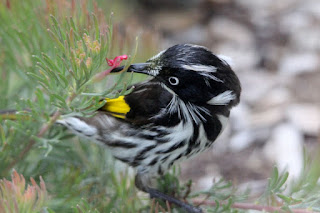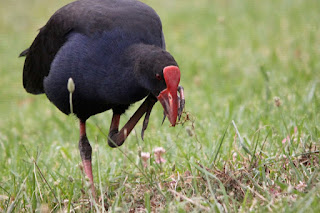The kids noticed these at Silverleaves recently and correctly identified them, I believe, as owl pellets. Hannah being an avid reader of the book series Guardians of Ga'Hoole was able to remind me that owls regurgitate their undigested food (bones, feathers, fur) in the form of these pellets. A little further reading informs me that many birds produce such pellets but that due to the features of their gastrointestinal tracts, it is owls and hawks/falcons that produce the most noticeable pellets.
I am guessing that the bird responsible for these pellets is a small owl, possibly Southern boobook. I am certainly familiar with it's well-known mopoke call but have not seen one in the wild since I've been listing my sightings!
Ahhh! One day!
 |
| Owl pellet showing a presumed mouse mandible with teeth, a long bone and fur |
 |
| I don't have large hands! The pellet was about 3cm long. I washed said small hands vigorously after reading somewhere that it is best not to handle pellets due to infection risk! |



















































